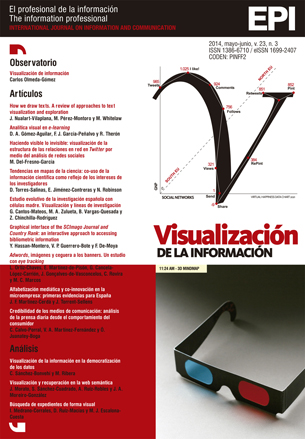AdWords, images, and banner blindness: an eye-tracking study
DOI:
https://doi.org/10.3145/epi.2014.may.08Keywords:
AdWords, Advertisement, Search engines, Google, Eye tracking, User testing.Abstract
Unlike most online advertising, Google opts for a purely textual model in the ads showed in its results pages. This paper presents an eye-tracking study conducted to determine if right-side graphic elements in Google AdWords affect users´ visual behavior. AdWords have been modified to contain logos and pictures. The analysis concludes that the appearance of images does not change user interaction with ads, which is attributed to the "banner blindness" effect.
Downloads
Downloads
Published
How to Cite
Issue
Section
License
Dissemination conditions of the articles once they are published
Authors can freely disseminate their articles on websites, social networks and repositories
However, the following conditions must be respected:
- Only the editorial version should be made public. Please do not publish preprints, postprints or proofs.
- Along with this copy, a specific mention of the publication in which the text has appeared must be included, also adding a clickable link to the URL: http://www.profesionaldelainformacion.com
- Only the final editorial version should be made public. Please do not publish preprints, postprints or proofs.
- Along with that copy, a specific mention of the publication in which the text has appeared must be included, also adding a clickable link to the URL: http://revista.profesionaldelainformacion.com
Profesional de la información journal offers the articles in open access with a Creative Commons BY license.




